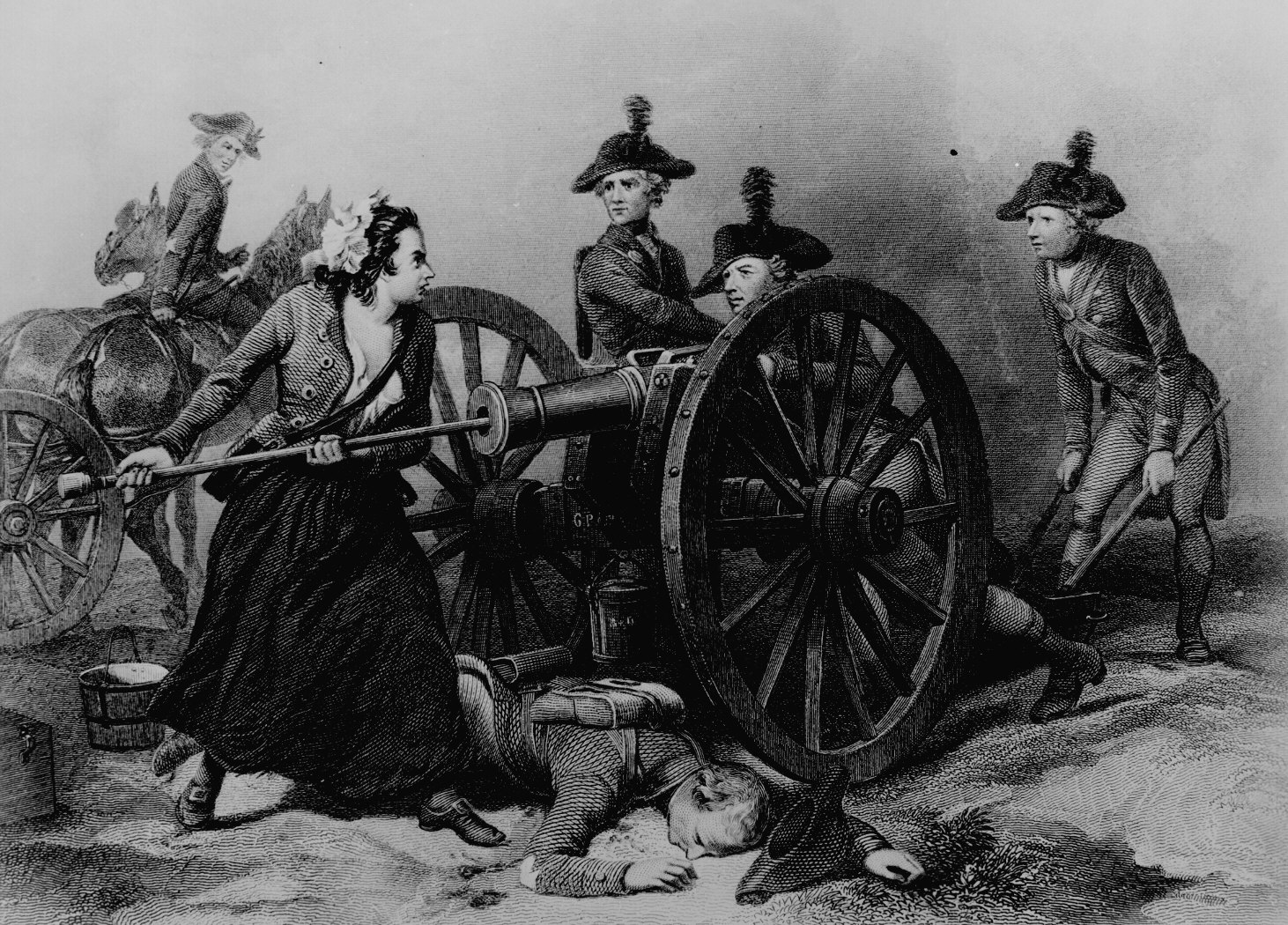

On November 16th, 1776, Margaret Corbin picked up her fallen husband’s weapon and held off the British advance on Fort Washington in northern Manhattan. Margaret was a camp follower, assisting soldiers of the Revolutionary War by carrying water and tending to the wounded. But when the British army continued to advance, despite having just lost her husband, Margaret Corbin continued to fight. Her aim was so precise that she single-handedly stopped the advance by forcing the British to focus on eliminating her. Margaret was shot three times and was in critical condition when the British took her as a prisoner.
Margaret Corbin was no stranger to the horrors of war. Born in western Pennsylvania in 1751, she was only four years old when the French and Indian War broke out. Hoping to take back territory that had been settled by the British, the Delaware and Shawnee Tribes attacked Margaret’s hometown. Luckily, while the situation was escalating, Margaret and her brother had been sent to live with an uncle. However, her parents were not as lucky. Her father was killed during the attack and her mother was taken and never heard from again.
But Margaret Corbin endured and her tenacity with which she was forced to fight through her early years would show through years later. In 1775, when she was 24 years old, Margaret’s husband, John Corbin, joined the Pennsylvania military to fight against the British. This left Margaret with a predicament. It was nearly impossible to run a house alone at the time, particularly with no source of income. On top of that, the British were known to attack citizens sympathetic to the cause. So, Margaret followed her husband as a camp follower.
Consisting of daughters and wives of soldiers, camp followers held an interesting role during the Revolutionary War. Their work was essential as they cooked, sewed, did laundry, and acted as medics for wounded soldiers. Margaret continued to work in this role by her husband’s side until they reached Fort Washington and they were engaged in battle.
Manhattan had been taken by the British in September and Fort Washington was the only American stronghold left. On the day of the battle, the British unleashed Hessian mercenaries, a particularly skilled auxiliary regiment of Germans who were fighting as part of the British army. But Margaret Corbin was undeterred, and she followed her husband into battle dressed as a man.
The Hessian regiment advanced and killed most Soldiers on the front lines, including John Corbin. While many retreated to a safer location, Margaret took her husband’s cannon and fired upon the encroaching regiment. She was shot in her arm, jaw and chest and lay on the ground, bleeding when the British took her to be tended to by their medics. The British eventually took the fort, but Margaret survived the battle.
Following her heroic stand, Margaret was paroled by the British and she went to work at West Point, caring for other wounded soldiers. Despite her bravery, Margaret found herself in an impossible position. She had completely lost the use of one of her arms and her injuries made dressing herself, feeding herself, and other daily activities nearly impossible. With the death of her husband, Margaret had no family left, which is what many relied upon in colonial-era America.
But word of Margaret’s bravery spread and before long, the legend of “Captain Molly” made its way throughout the Continental Army. Soldiers who were present that day spoke of her steady aim and her courage in the face of mercenaries. Eventually, the Continental Congress got wind of Margaret Corbin’s actions and she was awarded the very first lifelong pension ever bestowed upon a woman. The pension was half that of most Soldier’s pensions, so in order to rectify this, and at the urging of fellow soldiers, a few years later, she was also given a food and rum allowance. In addition, Gen. Henry Knox, a commander in the Continental Army who was familiar with Margaret’s story, provided her with a servant to help her with bathing and eating.
Margaret Corbin died in 1800 and it wasn’t until 1926, when the Daughters of the American Revolution verified Margaret’s story that she was finally given full military honors and a proper burial at West Point. Through struggle, heroic actions, and a commitment to service, Margaret Corbin fought her battles both on the battlefield and off and paved the way for other brave women to join in this proud tradition of serving for the United States military.
Fox Nation is now offering a year of free subscription to military members and veterans. Sign up to watch their new Untold: Patriots Revealed series with Pete Hegsworth and learn about more incredible figures in the nation’s history.
This article is sponsored by Fox Nation.
